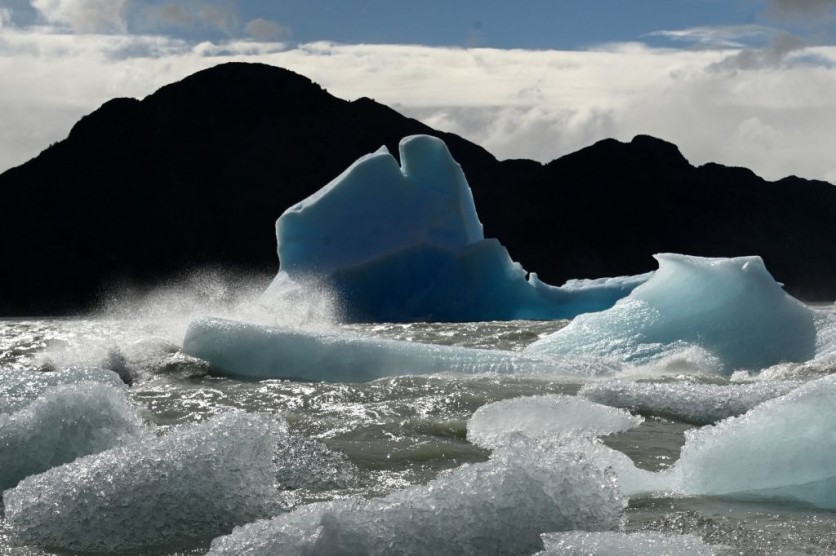Antarctica hides secrets yet to be unveiled, and an underwater robot has helped a group of researchers unravel some. Based on a first-of-its-kind exploration by an underwater robot, a Cornell University-led research found the essential role of crevasses in circulating seawater beneath Antarctic ice shelves.
Underwater Robot Discovers New Circulation Pattern in Ice Shelf of Antarctica
Often referred to as the Earth's freezer, Antarctica conceals numerous secrets yet to be unveiled, and this recent research has illuminated the pivotal role played by crevasses within this icy expanse.
Interesting Engineering reported that these crevasses, previously viewed as mere fractures in the ice, have emerged as critical components in facilitating the circulation of seawater beneath the Antarctic ice shelves, potentially influencing their stability.

With the help of a remotely operated underwater Icefin robot, this breakthrough discovery has the potential to redefine our comprehension of the Antarctic ice sheets and their influence on global sea-level rise.
For years, crevasses were perceived as stationary, frigid cavities. However, the Icefin robot, navigating a crevasse within the foundation of the Ross Ice Shelf, achieved the world's first 3D analysis of oceanic conditions within the grounding zone, effectively challenging this conventional perception.
The grounding zone has been largely unexplored until this recent investigation. This research has now exposed a significant revelation about the impact of crevasses in guiding water along the ice shelf's coastline.
Read Also : Antarctica's Ice Shelves Thickness Revealed: Surprising Result May Alter Sea Level Rise Projections
Antarctica Crevasses' Potential to Transport Changing Ocean Conditions
The expedition of the Icefin robot uncovered a novel circulation pattern characterized by a jet directing water laterally through the crevasse. Additionally, it unveiled complex currents, along with various ice formations influenced by the dynamic shifts in flows and temperatures.
EurekAlert reported that these findings could enhance our predictive models regarding the rates of ice shelf melting and freezing at grounding zones, areas traditionally lacking in direct observations.
In late 2019, scientists initiated the deployment of the Icefin, a vehicle measuring roughly 12 feet in length and possessing a diameter of under 10 inches. The robot descended through a 1,900-foot borehole created using hot water, positioned near where Antarctica's largest ice shelf connects the Kamb Ice Stream.
Equipped with a range of capabilities that include thrusters, cameras, sonar, and various sensors, the robot collected essential data on water temperature, pressure, and salinity as it ascended approximately 150 feet up one slope and descended on the other side.
The study revealed a transformation in the ice formations inside the crevasse, where scalloped recesses transitioned into vertical runnels and distinctive features like green-tinged marine ice and stalactites were observed.
This complex interaction resulted in an uneven pattern of melting and freezing on the crevasse's two sides. Notably, a more pronounced melting process was discerned along the lower downstream wall of the crevasse.
Peter Washam, a polar oceanographer and research scientist at Cornell University and the study's lead author, observed the multitude of characteristics within the crevasse, noting how each provides valuable insights into distinct circulation patterns and the intricate relationship between ocean temperatures and freezing conditions.
"Crevasses move water along the coastline of an ice shelf to an extent previously unknown, and in a way models did not predict... The ocean takes advantage of these features, and you can ventilate the ice shelf cavity through them," Washam said in a press statement.
"Each feature reveals a different type of circulation or relationship of the ocean temperature to freezing... Seeing so many different features within a crevasse, so many changes in the circulation, was surprising," he added.
These unexpected findings, posted on Science Advances, revealed an astonishing array of features and changes in circulation within the crevasse.
The researchers said the findings highlight the pivotal role of crevasses in transporting changing ocean conditions - warmer or colder - through an ice shelf's most vulnerable region.
"If water heats up or cools off, it can move around in the back of the ice shelf quite vigorously, and crevasses are one of the means by which that happens... When it comes to projecting sea-level rise, that's important to have in the models," Washam noted.
Related Article : Antarctica Uncovered: Mississippi Mud Core Layers Research Helps Explain Why the South Pole is Frozen

ⓒ 2025 TECHTIMES.com All rights reserved. Do not reproduce without permission.




